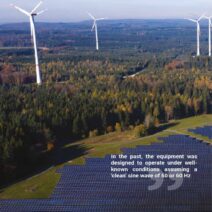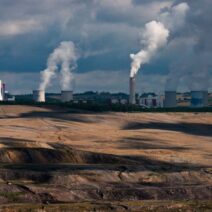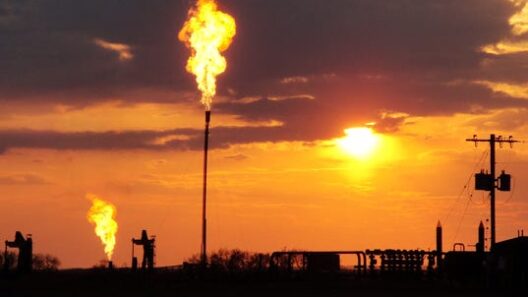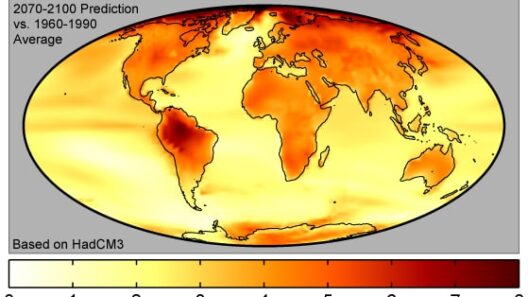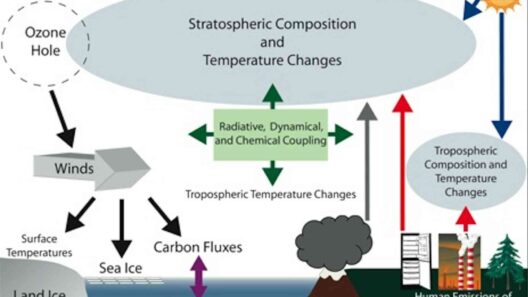Agriculture, often viewed as a benign endeavor necessary for sustenance, is inextricably linked to the phenomenon of global warming. It operates like a double-edged sword, simultaneously providing food security while also contributing significantly to greenhouse gas emissions. The paradox of farming as a foundational element of human civilization juxtaposed against its role as a driver of climatic upheaval demands an intricate exploration of its impacts.
At its core, agriculture alters the natural balance of ecosystems. The transformation of pristine landscapes into cultivated land introduces a plethora of changes. Forests, which serve as carbon sinks, are cleared to make way for crops, releasing vast amounts of carbon dioxide into the atmosphere. This deforestation acts like a forgotten key, unlocking the vaults of carbon that have been sequestered for centuries. When trees are felled, not only is carbon released, but also the land’s capacity to absorb future emissions diminishes, creating a vicious cycle.
The cultivation practices that ensue are equally consequential. The use of fertilizers, though instrumental in boosting crop yields, contributes to the atmospheric stew that accelerates climate change. Nitrous oxide, a potent greenhouse gas often emitted through fertilizers, has a global warming potential that is 298 times greater than carbon dioxide over a 100-year period. This means each application of fertilizers can yield not just bountiful harvests, but also enhanced warming potentials, illustrating how farmers, seeking to feed a growing population, inadvertently escalate their ecological footprint.
Another aspect of agricultural practice with far-reaching implications is livestock production. Ruminants, such as cows and sheep, engage in a natural process of enteric fermentation, producing substantial quantities of methane—a gas that is 25 times more effective than carbon dioxide at trapping heat in the atmosphere. The staggering statistics surrounding livestock raise profound questions: how many meals are worth the cost of an ever-warming planet? In a global economy increasingly driven by demand for meat, the balance between dietary choices and sustainability becomes ever more precarious.
As we dig deeper into the soil of agricultural impact, we unearth the issue of soil degradation. Intensive farming practices, often characterized by monocropping and overuse of pesticides, strip the earth not only of its nutrients but also of its carbon storage capabilities. Healthy soils are capable of acting as carbon sinks, but when deprived of biodiversity and organic matter due to excessive tillage and chemical inputs, they become net carbon sources, further driving the warming trend.
The interplay of climate change and agriculture feeds into a cycle of negative reinforcement. Climate change can alter weather patterns, leading to droughts or unanticipated floods that devastate crops. Farmers, in response, might turn to synthetic fertilizers and pesticides in a desperate attempt to salvage their yields. This reliance on chemical inputs amplifies the emissions associated with agriculture, creating a profound irony: the more we strive to combat food shortages brought on by climate change, the more we perpetuate the very problem we seek to mitigate.
However, solutions exist within the agricultural paradigm that can mitigate detrimental impacts and turn the tide of climate change. Regenerative agricultural techniques offer pathways toward sustainability. By practicing crop rotation, cover cropping, and reduced tillage, farmers can enhance their soil’s vitality while simultaneously sequestering carbon. Permaculture models, which embrace biodiversity and mimic natural ecosystems, promote resilience against climate variability and serve to rejuvenate the land instead of deplete it.
Agroforestry can also play a profound role in combatting climate change. Integrating trees with crops and livestock creates complex systems that enhance carbon storage, improve biodiversity, and increase resilience against pests and diseases. This approach brings to mind a symphony—various instruments (or agricultural practices) harmonizing together to create a more melodious existence with nature, as opposed to a cacophony of destructive practices that lead to environmental discord.
Additionally, innovative practices such as vertical farming and hydroponics present cutting-edge solutions for urban populations. These methods utilize smaller footprints and greater efficiencies, drastically reducing transportation emissions and promoting localized food production. Urban agriculture can serve as a beacon of hope, transforming familiar cityscapes into vibrant spaces of sustainability.
Moreover, policy frameworks play a pivotal role in steering agriculture toward sustainability. Incentivizing practices that promote carbon sequestration and mitigating the use of high-impact fertilizers can catalyze the transition to a more ecologically friendly agricultural system. Legislations that support smallholders in implementing sustainable methods can lead to collective progress, reaching the grassroots level where the impacts of climate change are often most stark.
The challenge before us is not insurmountable; it is a question of collective will and innovation. Our contemporary farmers, the stewards of the land, stand at a crossroads. With each seed sown and each crop nurtured, they possess the capability to either perpetuate or mitigate climate change. Understanding the intricate relationship between agriculture and global warming is not merely an academic exercise; it is an urgent dialogue on the very future of humanity and the planet. In the annals of history, the story of agriculture will be penned not just in the abundance it produces, but in the legacy it leaves for generations to come. The soil beneath our feet holds the potential of a sustainable future, provided we choose to nourish it wisely.
